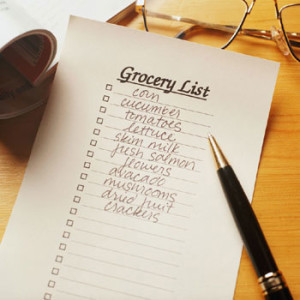April 1, 2016
By: Erin Ross BSc Nutrition
Reviewed by: Andrea Miller MHSc, RD
No matter what your budget it, saving money on groceries is a smart choice as the cost of food continues to increase. In 2015, Canadian consumers saw an increase in multiple food categories and this increase is predicted to continue into 2016. Researchers forecast that the cost of meat will increase another 2.5-4.5% and vegetables will increase another 2-4% . Eating on a budget does not mean sacrificing health, nutrition or flavour. Here are some helpful tips to use the next time you go shopping to help you save more and become a smart shopper.
BEFORE SHOPPING
Check what is in season. Fruits and vegetables that are in season are typically less expensive and more flavourful. During the colder seasons, think more “hardy” vegetables like carrots, cabbage and squash. Check out this link to see what’s in season now https://www.ontario.ca/foodland/page/availability-guide
Shop your cupboards first. See what you have on hand and what needs to be eaten first. You can plan meals this way as well. Plan a “Use-up-what-you-have” meal to use up items you have. Stews, soups and stir-fries are a great options for accomplishing this.
Make a list. Plan out meals for the week and stick to it. Impulse buys or making meals up on the spot can lead to spending more.
Plan out meals for the week and stick to it. Impulse buys or making meals up on the spot can lead to spending more.
Plan your destination. Check on line for flyers so see which stores have the best deals. Check out the app Flipp to get all you weekly flyers in one place! https://www.flipp.com/
Don’t go hungry. Shopping while hungry can lead to impulse buys and you craving sugary, unhealthy treats. Eating before shopping can also help you focus on the task and be able to shop for the best prices.

AT THE STORE
Shop the perimeter. The perimeter of the store is where the freshest, least processed foods are stocked (think fruits and vegetables, bread, meat, milks and eggs). Purchasing less prepackaged food can save money.
Look at the full shelf. There is planning that goes into the layout of the shelf and companies pay more to have their products in the prime spots. These prime spots are generally at eye level. Look above and below the name brand items for generic store brands for less expensive options.
Frozen fruit and vegetables. This can be a better option when fresh fruit and vegetable are out of season. They are frozen at their peak of freshness to lock in nutrients.
Purchase cheaper meat cuts. Buy cheaper cuts of meat and slow cook them for a stew. Cheaper cuts include chuck, blade and skirt. The higher collagen content of these cuts slowly break down making the meat perfectly tender and flavourful.
AFTER SHOPPING.
Cook once, eat twice. Make an extra serving to pack for lunch or dinner the next day. For example, make a huge batch of chili one night and use leftovers to pour over pasta the next day.
Do the work yourself. Buying a bag of whole carrots is cheaper then buying baby carrots. You can also try portioning out your own snacks. Each week, portion out your snacks instead of buying prepackaged crackers or hummus.
Freeze food. Stock on items on sale that can freeze well. There a lot of foods that freeze well; berries, bananas, leafy greens, yogurt, and cheese (shred or slice first).

